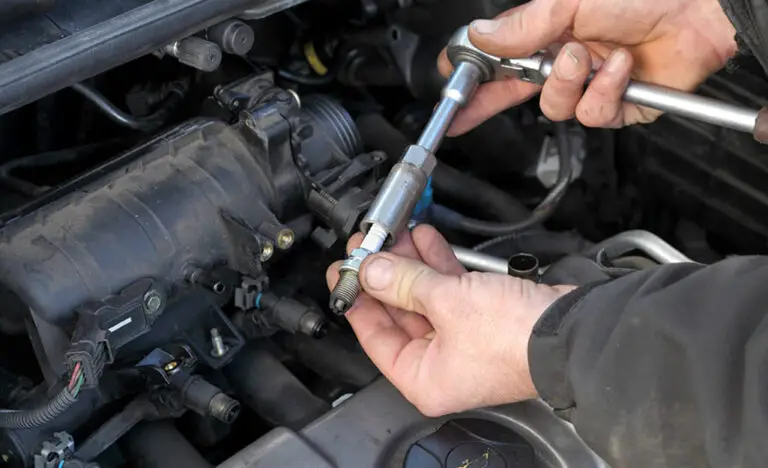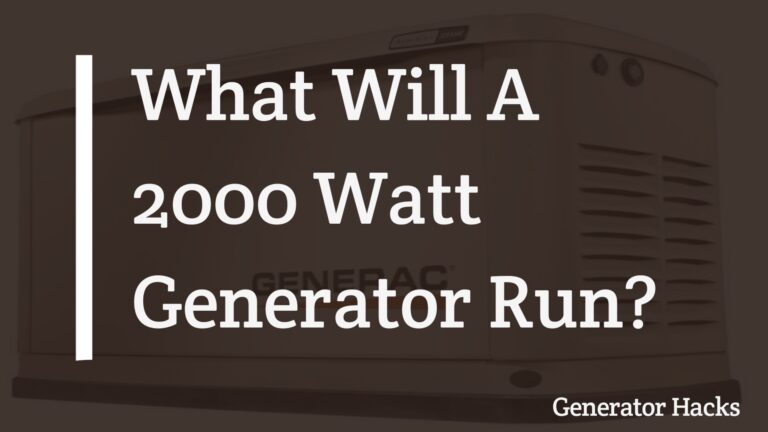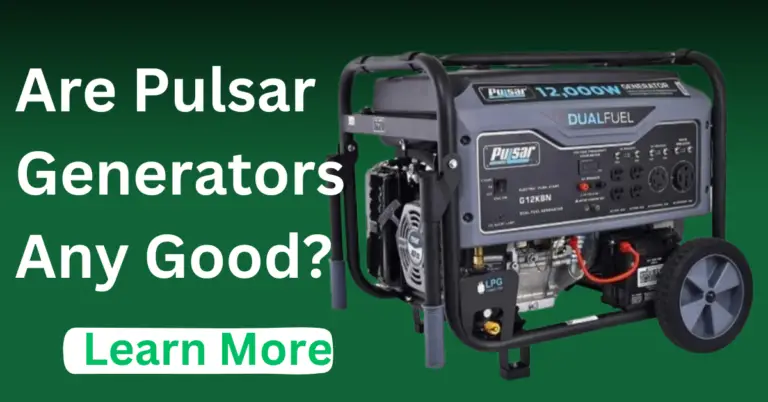As an Amazon Associate, we earn from qualifying purchases. This does not affect the price you pay or the quality of the products you buy. For more information, please read the full affiliate disclosure here.
Fuel injection has been around for decades in the automotive world back in the 1900s, but it recently made its way into the realm of generators.
And let me tell you, the benefits are huge. With a fuel injected generator, you can expect improved efficiency, better performance, and greater reliability — all while using less fuel and producing fewer emissions.
However, if you’re in the market for a new generator or just want to stay up to date on the latest trends in power generation, you won’t want to miss this.
This article will cover everything you need to know about fuel injected generators, from how they work to why they’re quickly becoming the new standard in the generator industry.
So, let’s dive in and learn all about the exciting world of fuel injected generators!
How Does Fuel Injected Generators Work?
To understand the benefits of fuel injection, it’s important to first understand how it works.
In a traditional carbureted engine, fuel is mixed with air in a carburetor before being sent to the engine for combustion.
The problem with this system is that it can be inefficient and imprecise, leading to wasted fuel and decreased performance.
In a fuel injected engine, on the other hand, the fuel is injected directly into the combustion chamber in precise amounts and at specific times.
This allows for more efficient and complete combustion, leading to better performance and improved fuel economy.
Fuel injection systems use sensors to monitor various engine parameters, such as air intake, engine temperature, and throttle position.
This information is then used by the engine control module (ECM) to determine the optimal amount of fuel to inject into the combustion chamber.
By adjusting the fuel injection rate in real-time, the ECM can ensure that the engine is always running at its most efficient and effective level.
Benefits of Fuel Injected Generators Over Carburetors
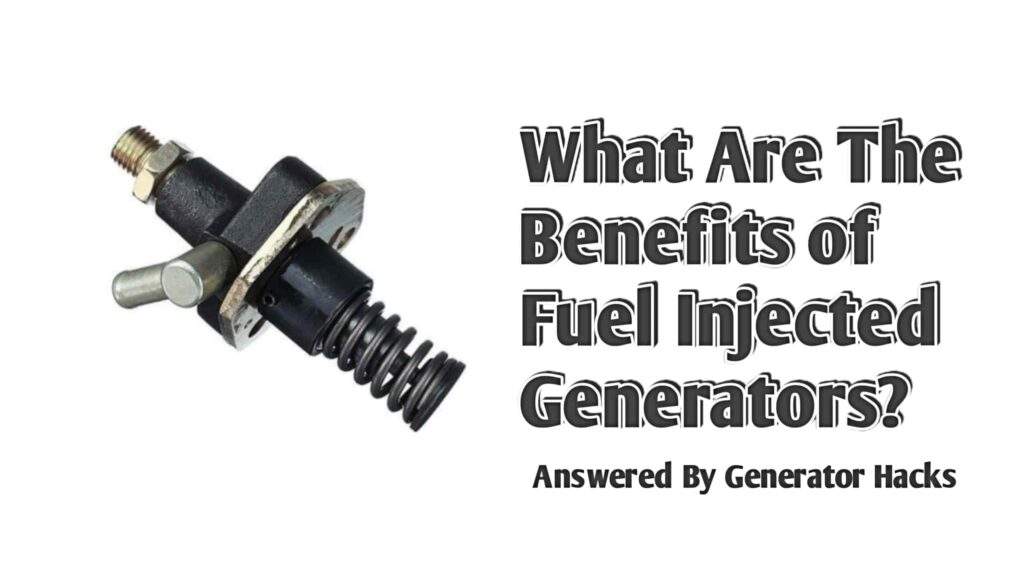
Fuel-injected generators offer some huge benefits and advantages over traditional carbureted engines, including:
1. Better Emissions Control
Fuel-injected generators have better emissions control than carbureted generators.
This is because the electronic fuel injector (EFI) system allows for precise control over the fuel-to-air ratio, resulting in a cleaner burn and lower emissions.
In contrast, carbureted generators can emit higher levels of pollutants such as carbon monoxide, nitrogen oxide, and hydrocarbons.
2. Improved Fuel Efficiency
One of the biggest advantages of fuel injection is improved fuel efficiency.
By injecting fuel directly into the combustion chamber in precise amounts, fuel injected generators can burn fuel more efficiently and completely than carbureted engines.
This leads to less wasted fuel and greater overall efficiency, which can translate to significant cost savings over time.
In addition to improved efficiency and performance, fuel injection also offers greater reliability and easier starting in all weather conditions.
This is because fuel injection systems are less susceptible to problems such as clogged carburetors and vapor locks, which can plague traditional carbureted engines.
3. Better Performance
Fuel injection also offers better performance than carburetion.
By precisely controlling the amount of fuel delivered to the engine, fuel injection allows for more accurate air-to-fuel ratios, which can result in increased power and torque.
This means that fuel injected generators are better equipped to handle heavy loads and power-hungry equipment.
4. Greater Reliability
Another advantage of fuel injection is greater reliability.
Carbureted engines are often prone to issues such as clogged carburetors and vapor locks, which can cause the engine to stall or fail altogether.
Fuel injection, on the other hand, is much less susceptible to these problems, leading to more consistent and reliable performance.
5. Easier Starting in all Weather Conditions
Fuel injection also makes for an easier start in all weather conditions.
Because fuel injection systems are less susceptible to problems such as vapor lock and flooding, they are better equipped to handle cold or hot weather.
This means that you can rely on your fuel injected generator to start up quickly and reliably, no matter what the conditions are outside.
6. Lower Maintenance Requirements
Lastly, fuel injected generators have lower maintenance requirements than carbureted generators.
This is because electronic fuel injector (EFI) systems are more reliable and require less upkeep than mechanical carburetors.
For example, carbureted generators require regular carburetor cleaning and adjustment, while fuel injected generators do not.
As a result, you can spend less time and money on maintenance and more time enjoying your generator.
Fuel Injection Systems vs. Carbureted Systems
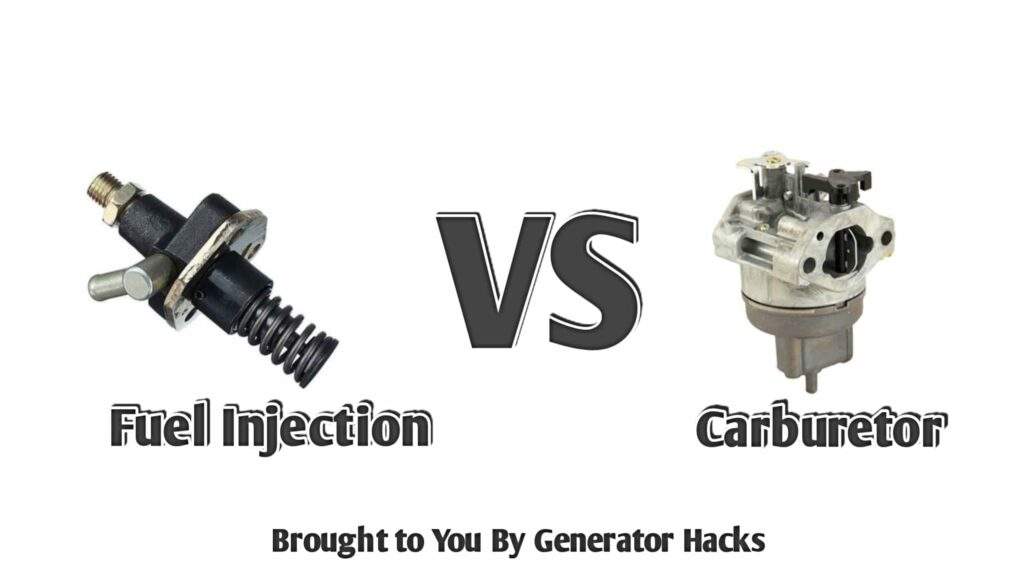
Carbureted systems use a mechanical carburetor to mix air and fuel in the correct proportion to create combustion in the engine.
Fuel injection systems, on the other hand, use a fuel pump to deliver fuel to the injectors, which then spray the fuel into the engine’s intake manifold.
The engine control module (ECM) determines the amount of fuel to inject based on several inputs, including the throttle position, engine temperature, and oxygen sensor readings.
This allows for more precise control over the fuel-to-air ratio and combustion process, resulting in improved efficiency and performance.
Components of a Fuel Injection System
Fuel-injected generators typically have four main components in their fuel injection system: the fuel pump, fuel injectors, fuel pressure regulator, and engine control module.
1. The fuel pump is responsible for delivering fuel from the fuel tank to the injectors. It does this by using a small electric motor to create pressure in the fuel lines, which forces the fuel through the injectors and into the engine.
2. The fuel injectors are responsible for spraying fuel into the engine’s intake manifold in a precise and controlled manner. The engine control module determines the amount of fuel to inject based on the inputs mentioned earlier and sends signals to the injectors to spray the fuel at the right time.
3. The fuel pressure regulator ensures that the fuel pressure in the fuel lines remains consistent, regardless of engine load or speed. This helps to maintain a consistent fuel-to-air ratio and improves engine performance.
4. The engine control module is the brain of the fuel injection system. It takes input from various sensors on the engine, such as the throttle position sensor, oxygen sensor, and engine temperature sensor, and uses this data to determine the optimal fuel-to-air ratio for the engine. It then sends signals to the fuel injectors to spray the correct amount of fuel into the engine at the right time.
What Are the Operating Principles of a Fuel Injected Generator?
The operating principle of a fuel-injected generator is similar to that of a carbureted generator.
The engine is connected to an alternator, which produces electrical power when the engine is running.
In a fuel injected generator, the engine is controlled by the fuel injection system, which provides precise control over the combustion process and engine performance.
When the generator is started, the fuel pump begins to deliver fuel to the injectors.
The engine control module determines the optimal fuel-to-air ratio based on the input from various sensors and sends signals to the injectors to spray the fuel into the engine’s intake manifold.
The fuel mixes with air and is ignited by the spark plugs, creating combustion in the engine.
As the engine runs, the alternator produces electrical power, which is then delivered to the generator’s outlets.
Advantages of Electronic Fuel Injection (EFI) over Mechanical Fuel Injection (MFI)
There are several advantages of electronic fuel injection over mechanical fuel injection, which was used in older generators.
Electronic fuel injection provides more precise control over the fuel-to-air ratio, resulting in improved engine performance, fuel efficiency, and emissions control.
Electronic fuel injection also requires less maintenance than mechanical fuel injection, which can be more prone to wear and tear over time.
Finally, electronic fuel injection allows for more advanced engine control and diagnostics, which can be useful for troubleshooting issues with the generator.
Tips for Maintaining a Fuel Injected Generator
Like all generators, fuel injected generators require proper maintenance to ensure their optimal performance and longevity.
In this section, we’ll take a closer look at some tips for maintaining a fuel-injected generator.
1. Regular Oil Changes
Regular oil changes are crucial for maintaining the performance and longevity of any generator, including fuel injected generators.
It is recommended to change the oil after the first 20 hours of operation and then every 100 hours thereafter.
Make sure to use the manufacturer-recommended oil and follow the recommended oil change intervals.
2. Checking Fuel Filters and Injectors
Fuel filters and injectors are essential parts of fuel injection systems, and their proper functioning is crucial for the performance of the generator.
Dirty or clogged fuel filters and injectors can lead to decreased fuel efficiency and engine performance.
Check the fuel filters and injectors regularly, and replace them if necessary.
3. Keeping the Fuel Tank Clean
Keeping the fuel tank clean is essential for ensuring the proper functioning of fuel injection systems.
Dirt, debris, and water can accumulate in the fuel tank, leading to clogged fuel filters and injectors and decreased fuel efficiency.
Make sure to clean the fuel tank regularly and use a fuel stabilizer to prevent fuel degradation and water accumulation.
4. Running the Generator at Least Once a Month
Running the generator at least once a month is crucial for keeping the engine components lubricated and preventing corrosion and buildup.
Running the generator for 30 minutes to an hour will also ensure that the battery is charged and ready for use when needed.
5. Storing the Generator Properly
Proper storage of the generator is essential for its optimal performance and longevity.
Make sure to store the generator in a cool, dry place away from direct sunlight and moisture.
Before storing the generator, drain the fuel tank and carburetor, and add a fuel stabilizer to prevent fuel degradation. Also, disconnect the battery and store it separately in a cool, dry place.
Frequently Asked Questions
What is a fuel injected generator?
A fuel injected generator is a type of generator that uses fuel injection technology to deliver fuel to the engine. Instead of a carburetor, fuel injection systems precisely control the amount of fuel delivered to the engine, leading to improved efficiency, performance, and reliability.
Are fuel injected generators more expensive than carbureted generators?
Fuel injected generators are typically more expensive than carbureted generators due to the added cost of fuel injection technology.
Can I upgrade my carbureted generator to a fuel injected model?
In some cases, it may be possible to upgrade a carbureted generator to a fuel injected model. However, this will depend on the specific make and model of the generator, as well as the availability of conversion kits.
Are fuel injected generators more difficult to maintain?
Fuel injected generators may require more specialized maintenance than carbureted generators, such as periodic cleaning and calibration of the fuel injectors.
Final Thought
Fuel injected generators are an excellent choice for anyone looking for a reliable and efficient source of backup power.
They offer several benefits over traditional carbureted systems, including improved fuel efficiency, lower maintenance requirements, and better starting reliability.
By understanding how they work and taking proper care of them, you can enjoy years of trouble-free power generation.
Have questions concerning these types of generators, drop a comment below!
